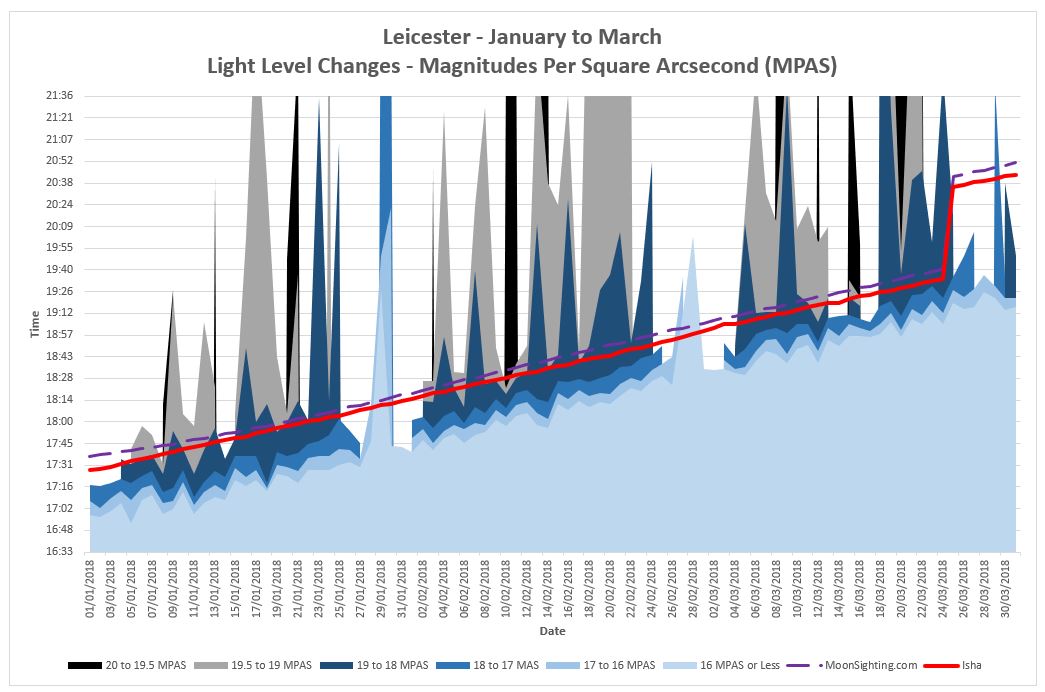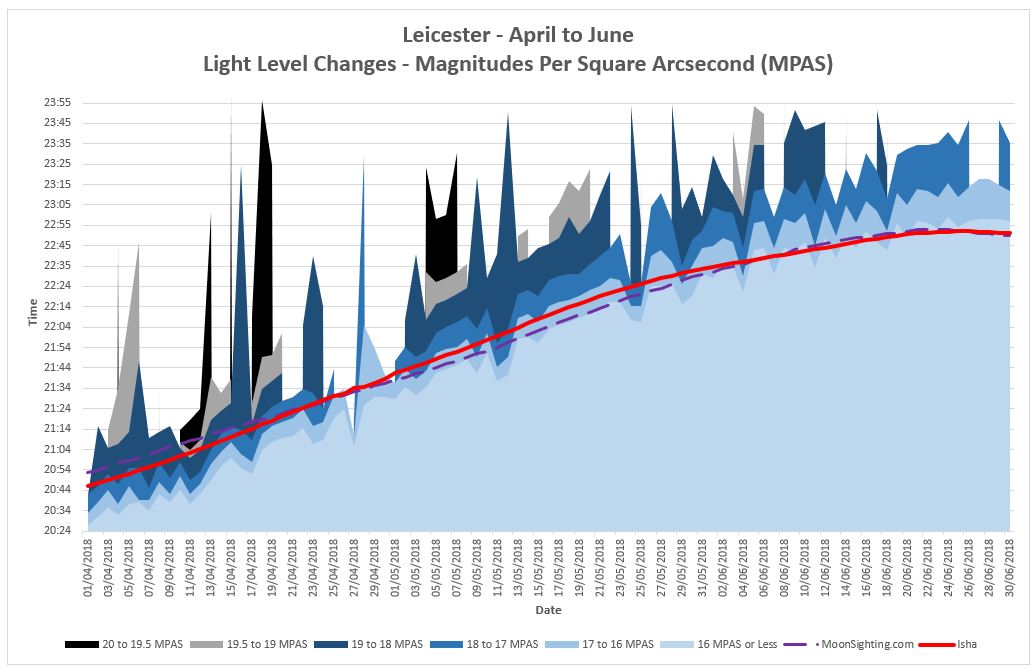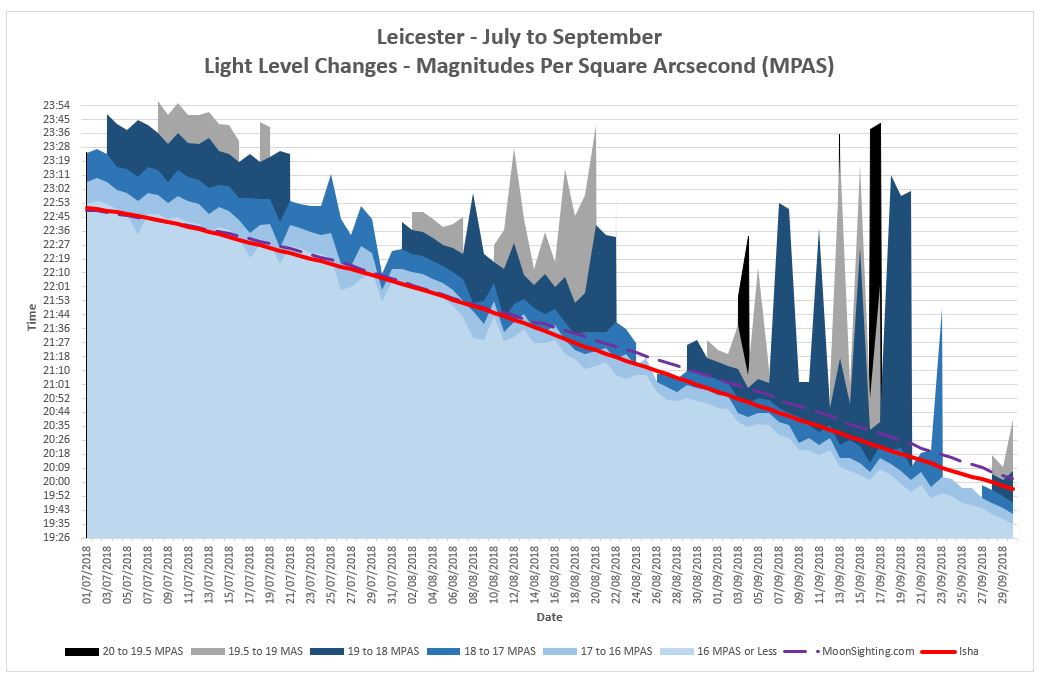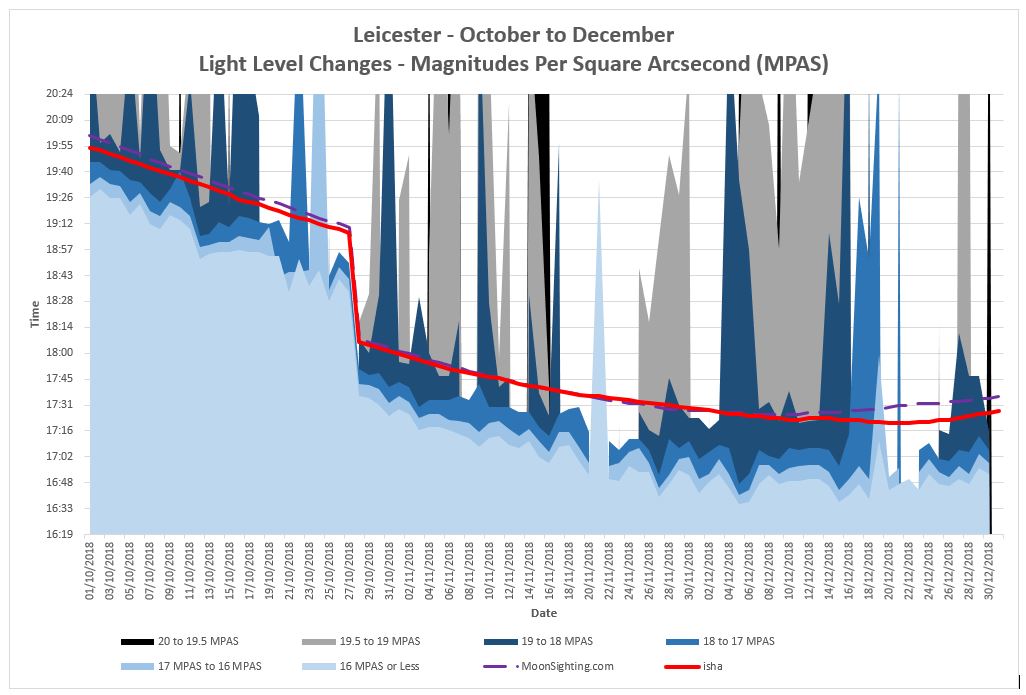A number of alternatives to establishing Isha at 18° have been established using different method over the years and here is the comparison between the light levels changes established using the Sky Quality Meter (SQM) and the commonly used system form Moonsighting.com.
MoonSighting.Com
A decade long research by Moonsighting.com describe the Subh al-Sadiq (dawn) and Isha as functions of latitude and seasons (day number of the solar year). All collected observations from different latitudes were plotted against day number of the year. With curve-fit technique, moonsighting.com came up with a function of latitude and seasons for Isha (& Fajr). There is no indication of any scientific equipment used.
The following charts compare the Isha times given by MoonSighting.Com with the light levels recorded in magnitudes per square arcsecond (MPAS) by the SQM. The established dawn times by this project are also shown.
[Click Image to Expand]
During the first quarter (Jan to Mar) of year, the Isha times given by Moonsighting is broadly in the 18 to 19 MPAS readings (Dark Blue of the chart) and follows the Isha established by this project (red line)
[Click Image to Expand]
During the first part of the second quarter (Apr to June) of year, the light level reading for expected Isha (dark blue area) match very closely to Moonsighting. During the height of the summer at the solstice, the moonsighting times for isha fall into the 16 MPAS area which may resulting in some remaining white light in the sky. This follows the Isha established by this project (red line).
[Click Image to Expand]
During the first part of the third quarter (Jul to Sept) of year, Moonsighting continues to give a more liberal result when compared to the MPAS reading during this time. For the remaining quarter the moonsighting data give a Isha time more in-line that suggested by the MPAs readings and follows the Isha established by this project (red line).
[Click Image to Expand]
For the last quarter (Oct to Dec), the Moonsighting data give an Isha time in-line with 19 MPAS light level readings and follow the Isha established by this project (red line)
What we learn from the comparison:
- The long term observations across seasons and latitudes (Moonsighting.com) when compared with light level readings show a broad match within a set band of time
- Both methods give Isha time before 18°




